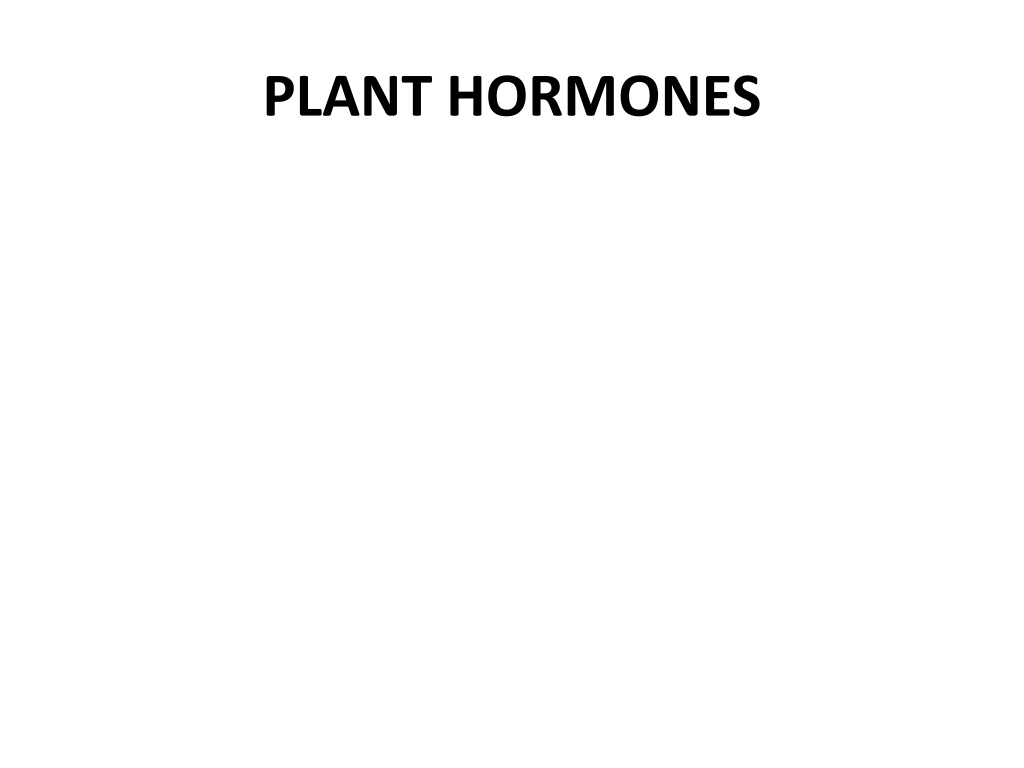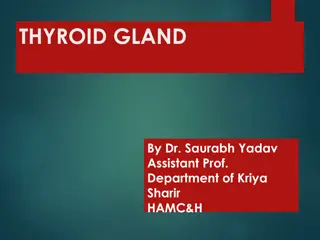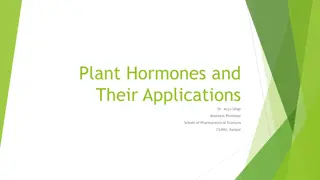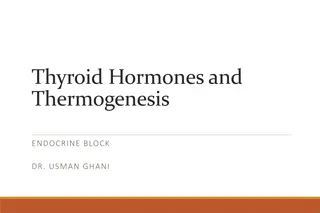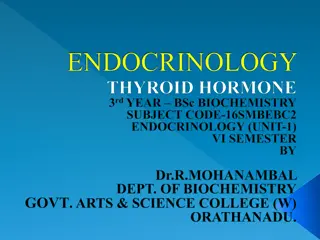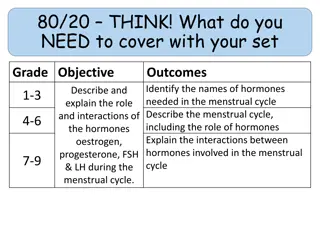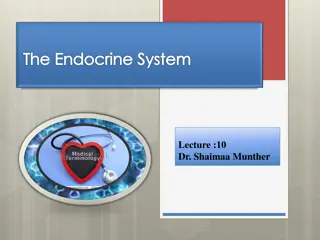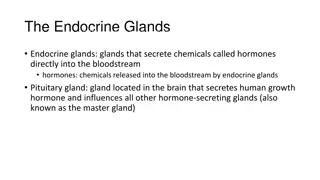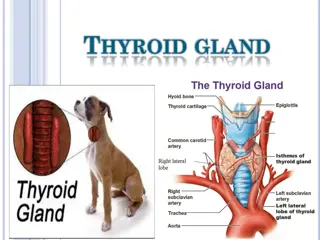Understanding Plant Hormones and Their Role in Growth and Development
Plant hormones are vital compounds that regulate various processes in plant growth and development. They are mostly organic and can be gases. These hormones are produced in one part of the plant and transported to other parts where they induce physiological effects. The main phytohormones include Auxins, Gibberellins, Cytokinins, Abscisic acid, and Ethylene. Auxins, for example, are formed in areas of active division and can stimulate or retard growth depending on their concentration. Synthetic auxins like IBA and NAA can induce reactions similar to natural auxins. Cytokinins are another group of plant hormones that play a crucial role in plant growth regulation.
Download Presentation

Please find below an Image/Link to download the presentation.
The content on the website is provided AS IS for your information and personal use only. It may not be sold, licensed, or shared on other websites without obtaining consent from the author. Download presentation by click this link. If you encounter any issues during the download, it is possible that the publisher has removed the file from their server.
E N D
Presentation Transcript
These are compounds, mostly organic while some are gases. They help to regulate some process in the growth and development of plants.
made in one part of the plant and translocated to some other parts where they are needed and induce physiological effects.
in the meristematic and young tissues and often exert there effects after translocation to some relatively distant tissue from the one in which they originate.
The phytohormones include Auxins, Gibberellins, Cytokinins, Abscisic acis, Ethylene etc. AUXINS
Also formed in areas of active division such as buds, flowers or inflorescence or growing flower stock and then transported to other parts of the plant to produce a particular physiological effect.
shoot downwards (this is called basipetal translocation). In few cases, upward transpiration current. At low concentration, they stimulate growth while at high concentration they retard growth.
the plant) induce reactions in the plants similar to those caused by IAA. Such syntheric auxins include Indole Butyric Acid (IBA), x- Naphthalene Acetic Acid (NAA), 2,4- dichlorophenoxy Acetic Acid (2,4D), NaphtoAcetic Acid, Triodobenzoic Acid.
called kinins) include Kinetin (6- furfury/amino purine). In most cases, kinetin s are not known to be natural plant constituent and is probably not a true plant b
Hormones but have many effects on plant growth and development.
to exhibit cytokinins activities such synthetic amino acids will include Benzyl Amino Purine (BAP). The natural cytokinins appear to remain principally in the apical root meristems, infloresences and developing fruits.
ERNA molecules in a number of different organisms. The manner of translocation of cytokinins is probably through the xylem to other parts of the plant.
plants and fruits of some plant species. Some other hormones such as IAA and Ethylene interact with ABA in the control of abscission. ABA appears to be an internal factor inducing dormancy in buds of some woody plants. ABA also prevents or delays the germination of many kinds of seeds.
roots etc. it promotes senescence (process of ageing) through leaf abscission, degeneration of excised leaves and acceleration of decomposition of chlorophyll. This hormone also inhibits flower induction in some long day plants.
ETHYLENE CH2CH2
influence the development and physiological reactions of other nearby plants. This hormone operates as a fruit ripening hormone. E.g. treatments of fruits like bananas, oranges, mangoes etc when matured but not yet fully ripened, with ethylene hasten their ripening. This type of treatment is of commercial importance.
Endogenously generated ethylene plays a role in normal abscission process especially in interaction with IAA and ABA.
GIBBERELLINS OR GIBBERELLIC ACID
1 2 3 closely related chemically and found to be naturally occurring in higher plants or in the original fungus source. They are of wide occurrence in vascular plants most especially in very low concentrations. The best known of the gubberellins is gibberellic acid A3 (GA3).
gibberellins rival auxins in their physiological effects in the plants. Gibberellins can substitute at least in parts or real light induction of leaf expansion and also in the breaking of dormancy of some light sensitive seeds e.g. lettuce. Many long day plants have been induced to flower in short days after treatment with gibberellins.
CLASSIFICATION OF PLANT MINERAL NUTRIENTS BASED ON THEIR BIOCHEMICAL FUNCTIONS
GROUP 1 Nutrients part of carbon compounds
NITROGEN (N): This is a constituent of amino acids, amines, proteins,nucleic acids, nucleotides, co-enzymes, hexoamines.
cysteine and cystine, methionine, proteins, lipoic cell wall, co-enzymes A, thymine, pyrophosphate, biotin, Adenosine -5-phosphosulphate.
of nucleotides, oc-enzymes, phospholipids etc. The phosphorus always have a key role in reactions that involve ATP.
amorphous silica in cell walls. It contributes to cell wall mechanical properties including rigidity and elasticity.
mannitol, polymannuronic acid, mannan and other constituents of cell wall. Boron is involved in cell elongation and nucleic acid metabolism.
